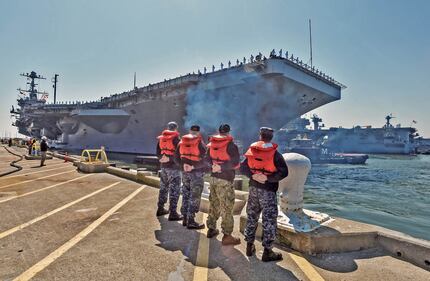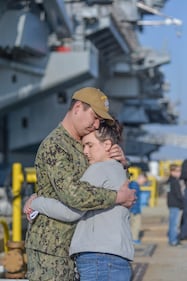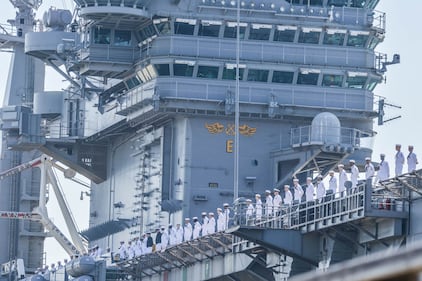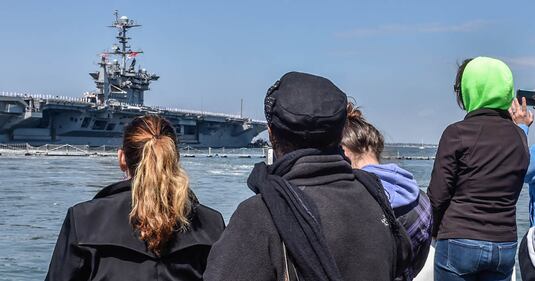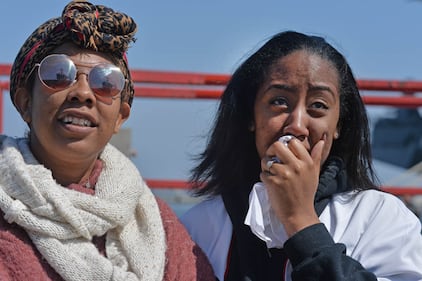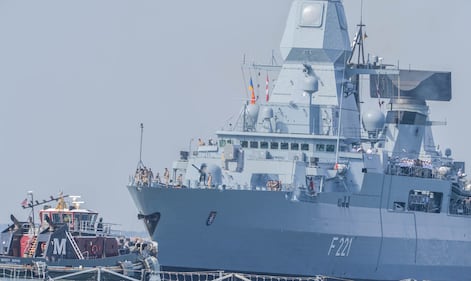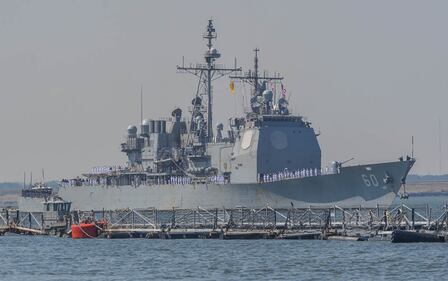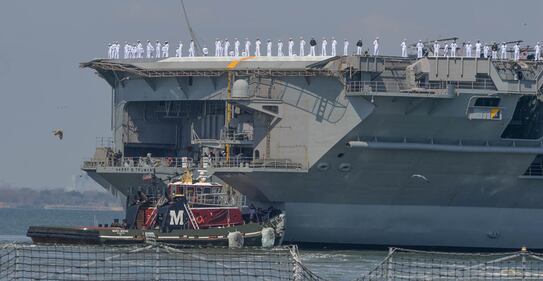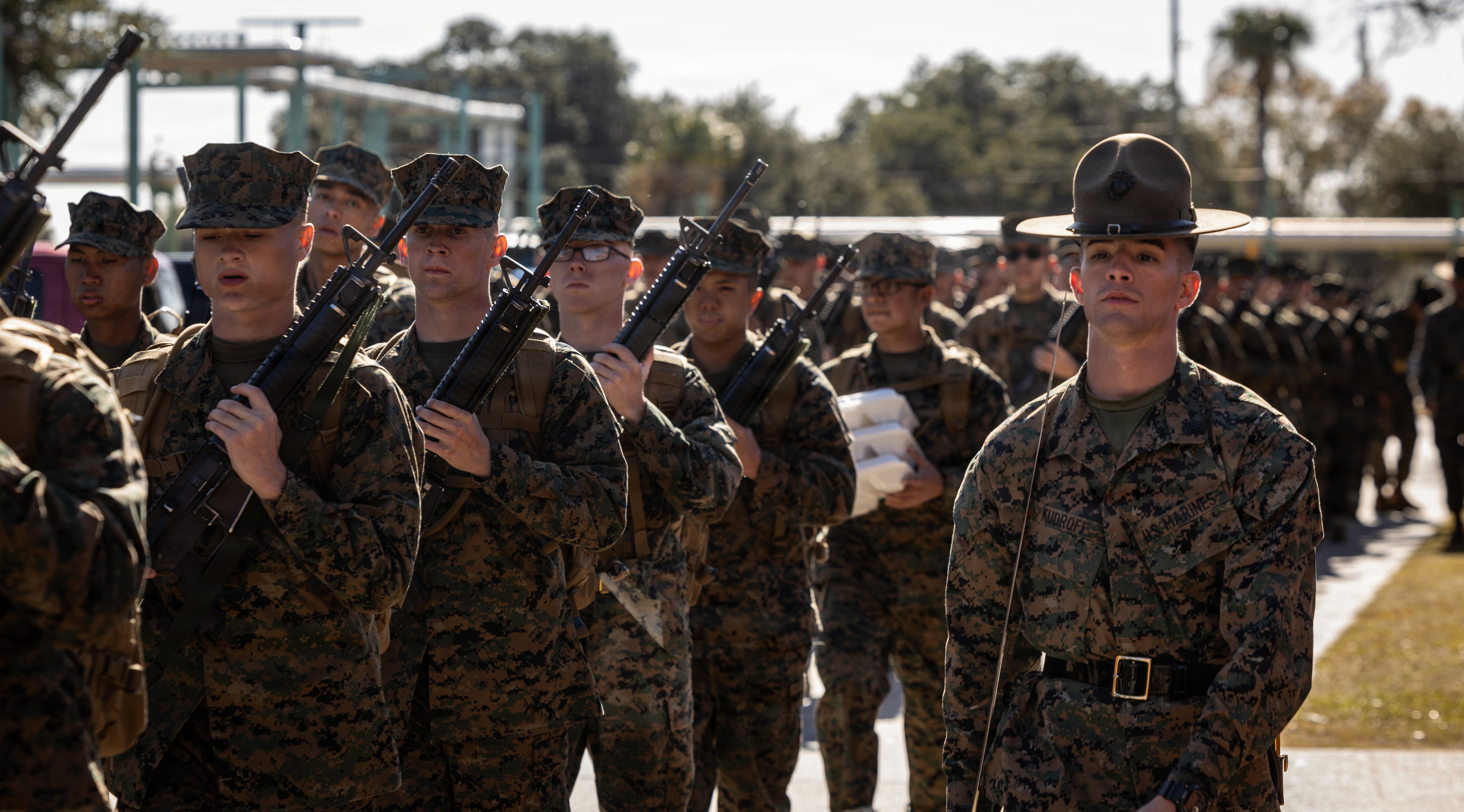NORFOLK, Va. — The carrier Harry S. Truman and her strike group left Norfolk April 11, just a year and nine months after returning from a record-setting deployment fighting ISIS in the Middle East.
She'll most likely be in the fight once again over the next few months as her regularly scheduled deployment takes the carrier, six surface ships, eight aviation squadrons and a total of 6,500 sailors to the operating areas of 5th and 6th Fleets.
Also departing Norfolk was the cruiser Normandy, and the destroyers Arleigh Burke, Bulkeley, Forrest Sherman and Farragut.
The Sachsen-class German frigate FGS Hessen will operate as part of the strike group during the first half of the deployment, and the guided-missile destroyers Jason Dunham and The Sullivans are slated to join the strike group at a future date.
Image 0 of 8
Operating from the Truman’s flight deck will be the eight squadrons of Carrier Air Wing One, which include Strike Fighter Squadrons 11, 211 and 136; Electronic Attack Squadron 137; Carrier Airborne Early Warning Squadron 126; and a detachment from Fleet Logistics Support Squadron 40.
The rotary-wing lineup includes Helicopter Maritime Strike Squadron 72 and Helicopter Sea Combat Squadron 11.
RELATED
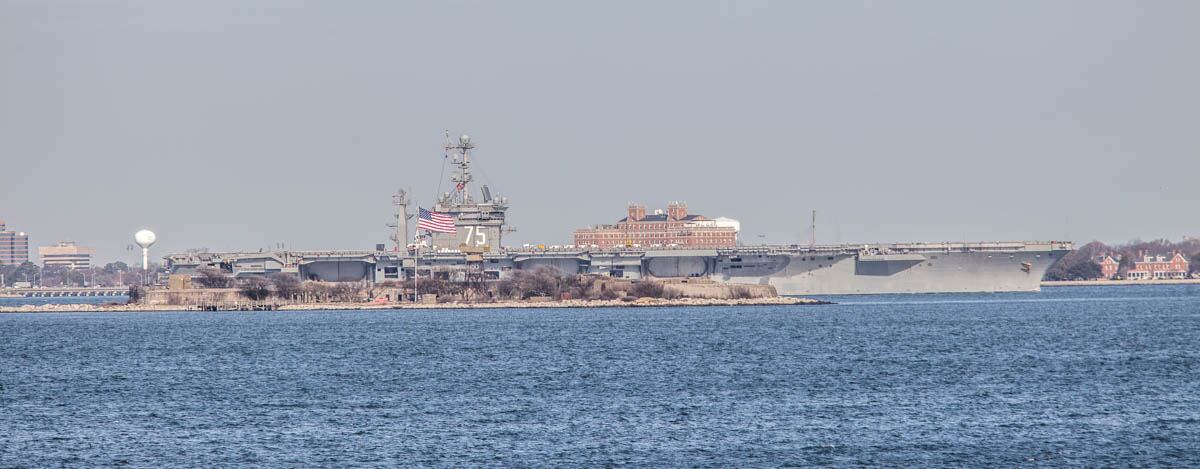
The strike group is commanded by Rear Adm. Gene Black, and the carrier and air-wing are commanded by Capt. Nick Dienna and Capt. John Perrone, respectively.
Since she last deployed, Truman has undergone a yard maintenance period that was finished a day ahead of schedule.
The current crew of Truman, meanwhile, has a long way to go to live up to the ship’s record from her last foray overseas.
During that 240-day cruise, Truman launched a total of 2,054 combat sorties that encompassed 20,788 flight hours. Almost 1,600 bombs were dropped on enemy targets.
Mark D. Faram is a former reporter for Navy Times. He was a senior writer covering personnel, cultural and historical issues. A nine-year active duty Navy veteran, Faram served from 1978 to 1987 as a Navy Diver and photographer.

